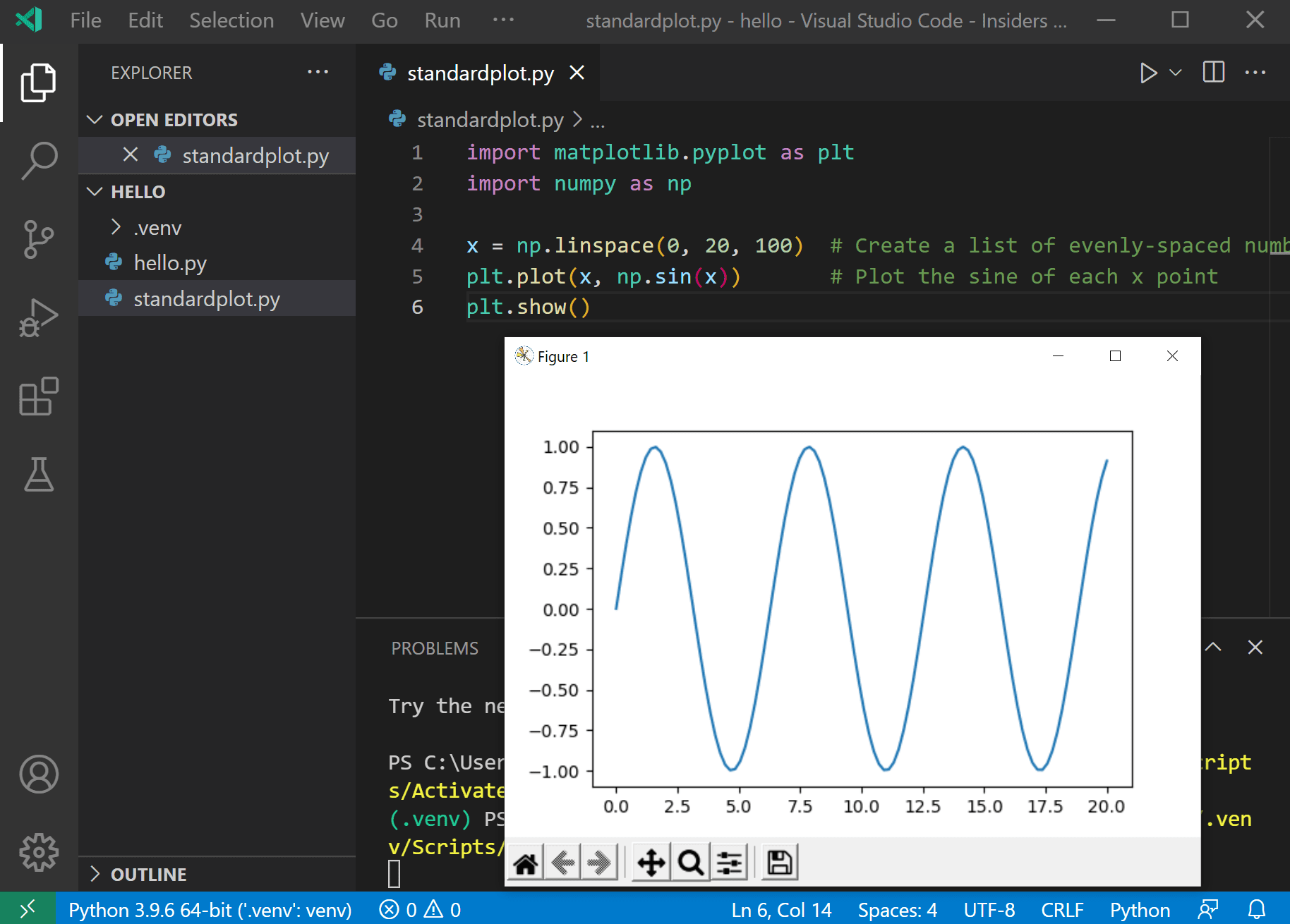

- #HOW TO USE HARD KEY TO RUN PYTHON IN VISUAL STUDIO CODE HOW TO#
- #HOW TO USE HARD KEY TO RUN PYTHON IN VISUAL STUDIO CODE UPDATE#
- #HOW TO USE HARD KEY TO RUN PYTHON IN VISUAL STUDIO CODE CODE#
- #HOW TO USE HARD KEY TO RUN PYTHON IN VISUAL STUDIO CODE PASSWORD#
- #HOW TO USE HARD KEY TO RUN PYTHON IN VISUAL STUDIO CODE DOWNLOAD#
We create an object of Configparser and name it config_file. So, we import configparser module that contains method and classes which could be used to define a layout of the config file that we need. Print( " Content of the config file are:\n")

Read_file = open( " configurations.ini", " r") Print( " Config file 'configurations.ini' created") # SAVE CONFIG FILE with open(r " configurations.ini", ' w') as configfileObj: set( " FTPSettings", " password", " my#supersecret#password") set( " FTPSettings", " userName", " codeteddy")Ĭonfig_file. set( " FTPSettings", " ftpUrl", " ")Ĭonfig_file. To start with and for the sake of understanding, I am first using hard coded values to print, then later will fetch those from config file.Ĭonfig_file = configparser.ConfigParser()Ĭonfig_file.
#HOW TO USE HARD KEY TO RUN PYTHON IN VISUAL STUDIO CODE CODE#
Write a small code that reads hardcoded values and print those. Open VS Code and create a new file and name it main.py. Create a Config File Launch VS Code and Create a main.py File
#HOW TO USE HARD KEY TO RUN PYTHON IN VISUAL STUDIO CODE HOW TO#
If not, I can post a separate article based on request on how to get started with Python in VS Code. I’ll not go into details of installing Python and configuring VS Code to run a Python application and assume that you have it. This could be very new to a developer like me who has just started working on Python, so, we’ll start from scratch. We’ll use VS Code (Visual Studio Code) to create a main method that uses config file to read the configurations and then print on the console. Python config files have the extension as. Python can have config files with all settings needed by the application dynamically or periodically. We’ll use ConfigParser module to deal with config files and see how easy it could be to generate and read configuration files.
#HOW TO USE HARD KEY TO RUN PYTHON IN VISUAL STUDIO CODE UPDATE#
In this article, we’ll have a walkthrough of how to create a config file, add a configuration, update a configuration, delete a configuration, and read a configuration in a Python application. But the best way is to create your own from scratch and use it as needed. Python applications do not by default provide a settings file, however you can use an existing one and modify it. These files serve the purpose of storing settings information.

NET applications sometimes by default provide files like appSettings, web.config, app.config when you start with a project template, based on what kind of application you are creating. But basic settings used in the application could be part of a configuration file. Of course, sensitive information like passwords, secrets and certificates should be kept more secure, may be in cloud vaults.

Not only this, but using config files makes your settings and code more reusable and keeps the settings information at a centralized location and segregated. If that configuration changes, developers can just change the configuration in that config file and not worry about changing the code as it may require re-compiling the code and deploying it. Config files are used to store key value pairs or some configurable information that could be read or accessed in the code and at some point, of time. NET background, I found it a bit challenging to figure out how a developer can have a configuration file in the Python application which could be used to read setting values and one does not have to even touch the code to update or save settings. What if the application has a configuration file that has key value pairs as “User”: “”, “Password”: “password” and whenever some change is needed, only that file is touched and configurations are updated rather than digging into the actual code. And this could be a repetitive task after 2~3 months when some configuration again changes. Here, a developer must, for a small configuration change, take the latest of the code, make the required change, make sure nothing else breaks, re-deploy the application and then test it. Now in this scenario, the developer would again change the code and redeploy it.
#HOW TO USE HARD KEY TO RUN PYTHON IN VISUAL STUDIO CODE PASSWORD#
If the developer uses these credentials in the code and hardcodes them in their code file and deploys the application, it could work fine, job done! Now, imagine that after two months, the password for that FTP site is changed and the developer must again update that password in your application to make sure it does not break the existing functionality of FTP connection.
#HOW TO USE HARD KEY TO RUN PYTHON IN VISUAL STUDIO CODE DOWNLOAD#
If a developer has a module in his project that connects with an FTP server to download some files, then the developer would write a method to connect to FTP via FTP URL and use credentials like username and password for successful connection.


 0 kommentar(er)
0 kommentar(er)
